This post may contain affiliate links. Please read our disclosure policy.
Are you ready to master the art of making bulgur wheat at home? You’ve come to the right place! In this easy-to-follow guide, I’ll walk you through the process of how to cook fine, medium, and coarse bulgur wheat. Grab your apron, and let’s get started on this delicious, nutritious, and versatile grain!
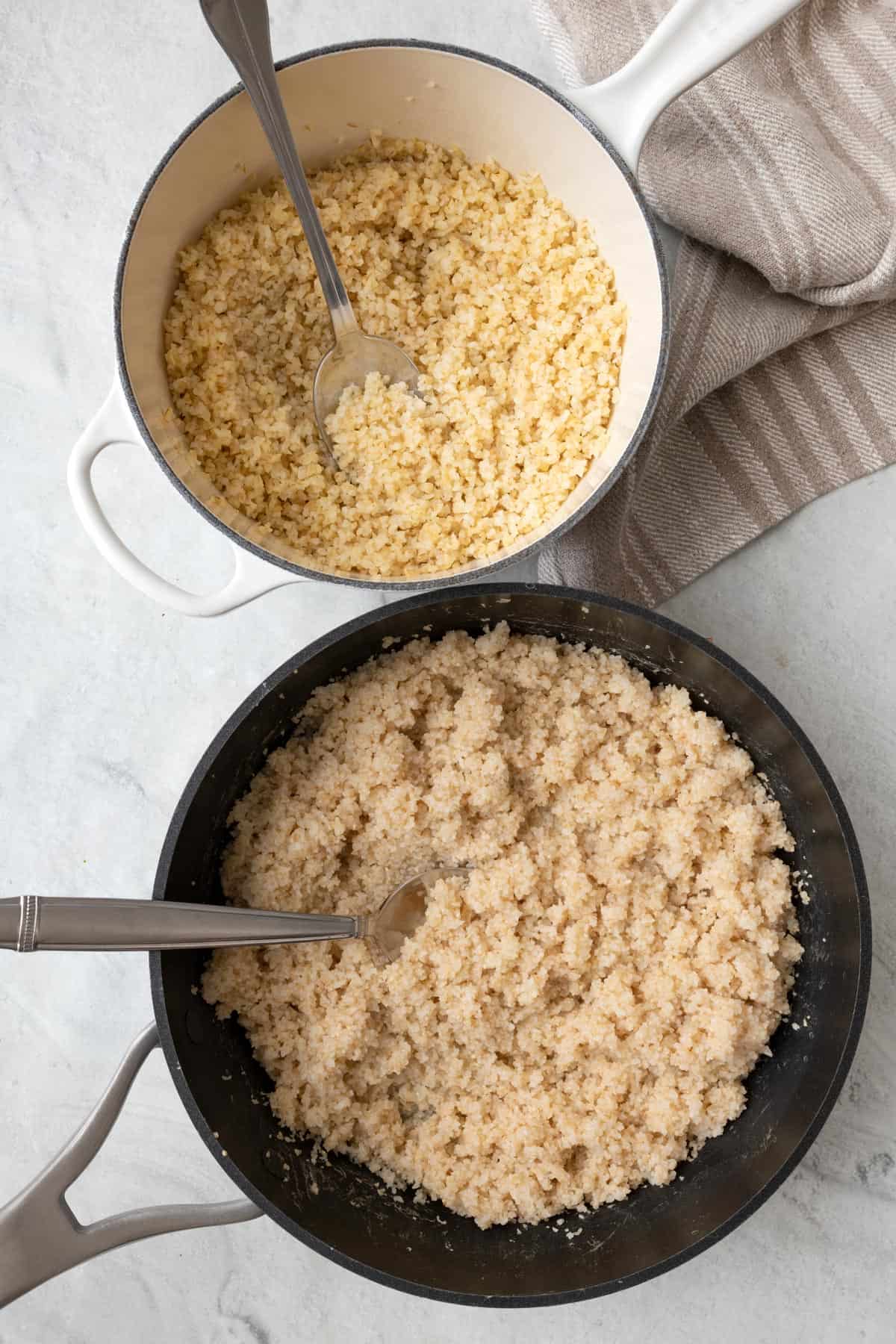
Table of Contents
Learning how to make bulgur wheat is a fantastic skill to have under your belt! Not only is bulgur wheat a healthy option, packed with fiber, protein, and essential nutrients, but it’s also incredibly versatile. You can use it in salads, pilafs, or as a side dish to complement your main course. Plus, preparing bulgur wheat is a breeze, requiring just a few simple steps to achieve the perfect texture. And if you’re on a budget, you’ll be pleased to know that bulgur wheat is an affordable pantry staple!
What is Bulgur Wheat?
Bulgur wheat is a whole grain made from cracked and partially cooked wheat berries, typically durum wheat. It’s a staple ingredient in Middle Eastern and Mediterranean cuisines, known for its nutty flavor and chewy texture. Bulgur wheat is also highly nutritious, boasting a wealth of fiber, protein, and essential nutrients.
Different Grain Sizes: Fine, Medium, and Coarse
Bulgur wheat comes in three main grain sizes: fine, medium, and coarse. Each size has its unique characteristics and is best suited for different types of dishes:
- Fine bulgur is the smallest grain size, which cooks quickly and has a delicate texture. It’s ideal for tabbouleh, a traditional Middle Eastern salad, or as a binder in recipes like kibbeh (a mixture of bulgur, ground meat, and spices).
- Medium bulgur is slightly larger than fine bulgur and has a firmer texture when cooked. It’s versatile and can be used in various recipes like pilafs, soups, or stews, as well as grain salads.
- Coarse bulgur has the largest grain size, offering a chewier texture and longer cooking time. It’s perfect for hearty dishes like stuffed vegetables or slow-cooked casseroles.
Why Different Cooking Methods for Each Size?
Each grain size requires a specific cooking method to ensure the perfect texture and consistency:
- Fine bulgur cooks quickly and doesn’t need much heat to become tender. It’s usually cooked by adding boiling water and letting it stand for a short period.
- Medium and coarse bulgur grains need more time and heat to cook thoroughly. They’re typically simmered in water or broth until tender and the liquid is fully absorbed.
By using the appropriate cooking method for each grain size, you can achieve the desired texture for your bulgur wheat dishes. And now that you know the basics, let’s get back to our base recipe for both fine and medium/coarse bulgur wheat!
Ingredients to make bulgur wheat
- Bulgur Wheat: When choosing the right type of bulgur wheat for your dish, consider the texture and what you’re making. Fine bulgur wheat works best for dishes that require a delicate texture. For recipes that call for a firmer, heartier texture, like pilafs or grain salads, medium bulgur wheat is your go-to choice. Coarse bulgur wheat is perfect for dishes that benefit from a chewy, robust texture. Make sure to follow the specific cooking instructions for the grain size you’re using to achieve the ideal texture and taste for your dish.
- Water: You can use water or your favorite stock to cook bulgur wheat, depending on the depth of flavor you’d like to achieve. Using water is a straightforward option that lets the natural, nutty taste of bulgur wheat shine through. Alternatively, you can use vegetable, chicken, or beef stock to infuse your bulgur wheat with additional flavors, creating a more complex and richer taste.
- Salt: Adding salt to the cooking liquid is essential for seasoning your bulgur wheat, bringing out its natural flavors and enhancing the overall taste of your dish. The amount of salt can be adjusted according to your personal preference or dietary needs. If you’re using stock in place of water, be mindful of the sodium content in the stock.
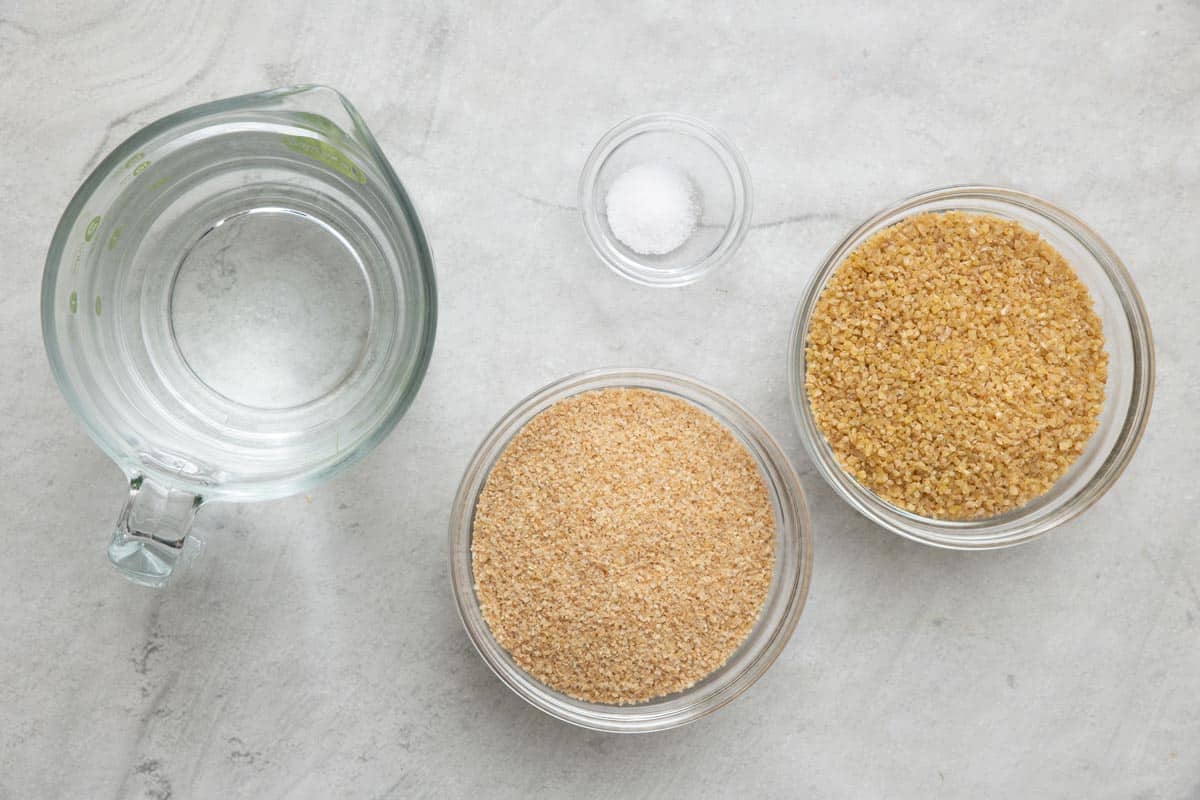
HOW TO MAKE fine, medium & Coarse Bulgur Wheat
Making bulgur wheat is really easy and takes no time at all!
How To Make Fine Bulgur WHeat
- Rinse the bulgur in a colander with cold water, making sure to agitate it with your hands to rinse it until the water runs clear. Drain immediately.
- Add the bulgur to the water and salt and stir.
- Remove from heat and let stand, covered.
- Fluff with a fork and serve.
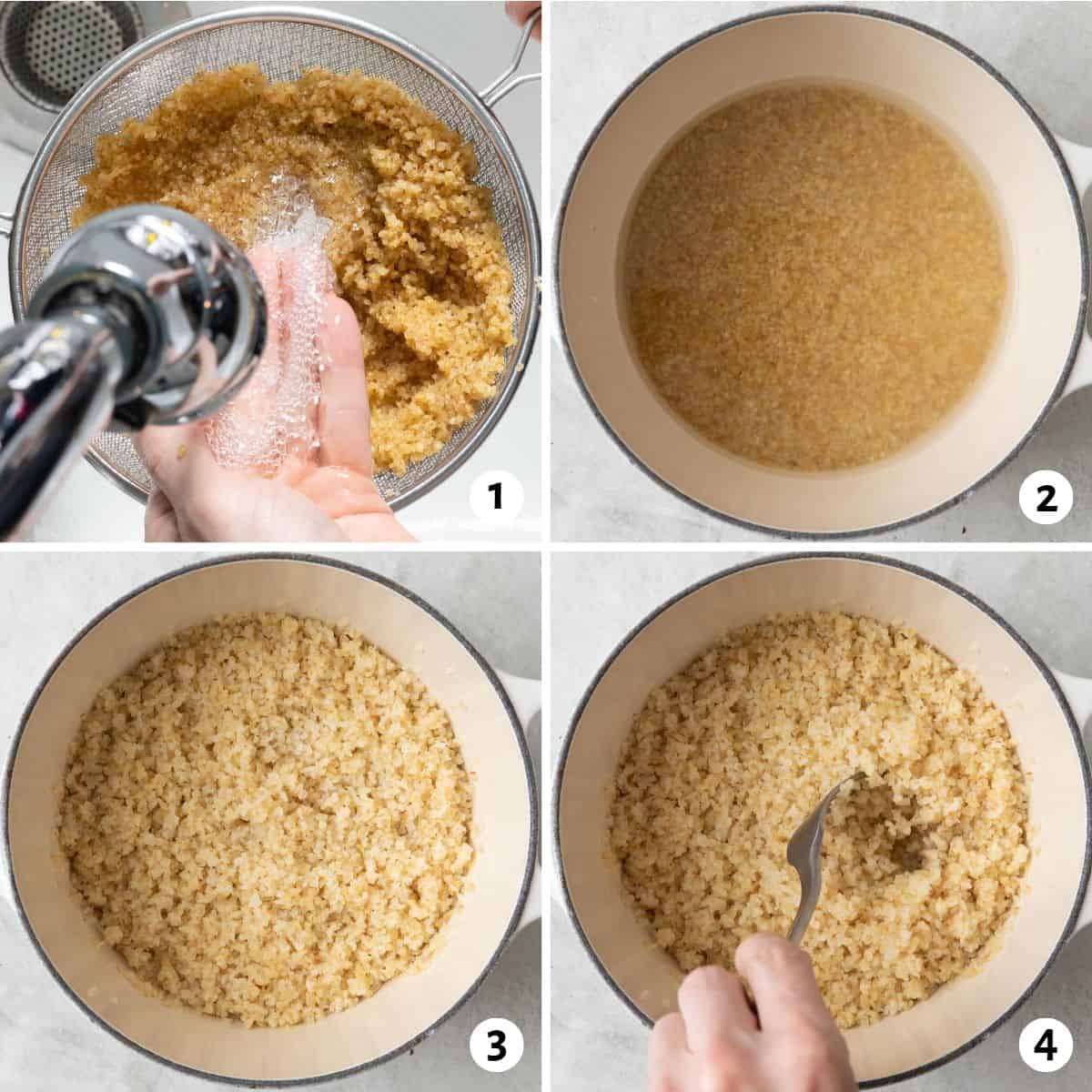
How To Make Medium & Coarse Bulgur Wheat
FOR MEDIUM OR COARSE BULGUR
- Rinse the bulgur in a colander with cold water, making sure to agitate it with your hands to rinse it until the water runs clear. Drain immediately.
- Add the bulgur to the water and salt. Stir and bring the mixture to a boil again. Lower the heat and cook the bulgur covered until tender.
- Remove from heat and let stand.
- Fluff with a fork and serve.
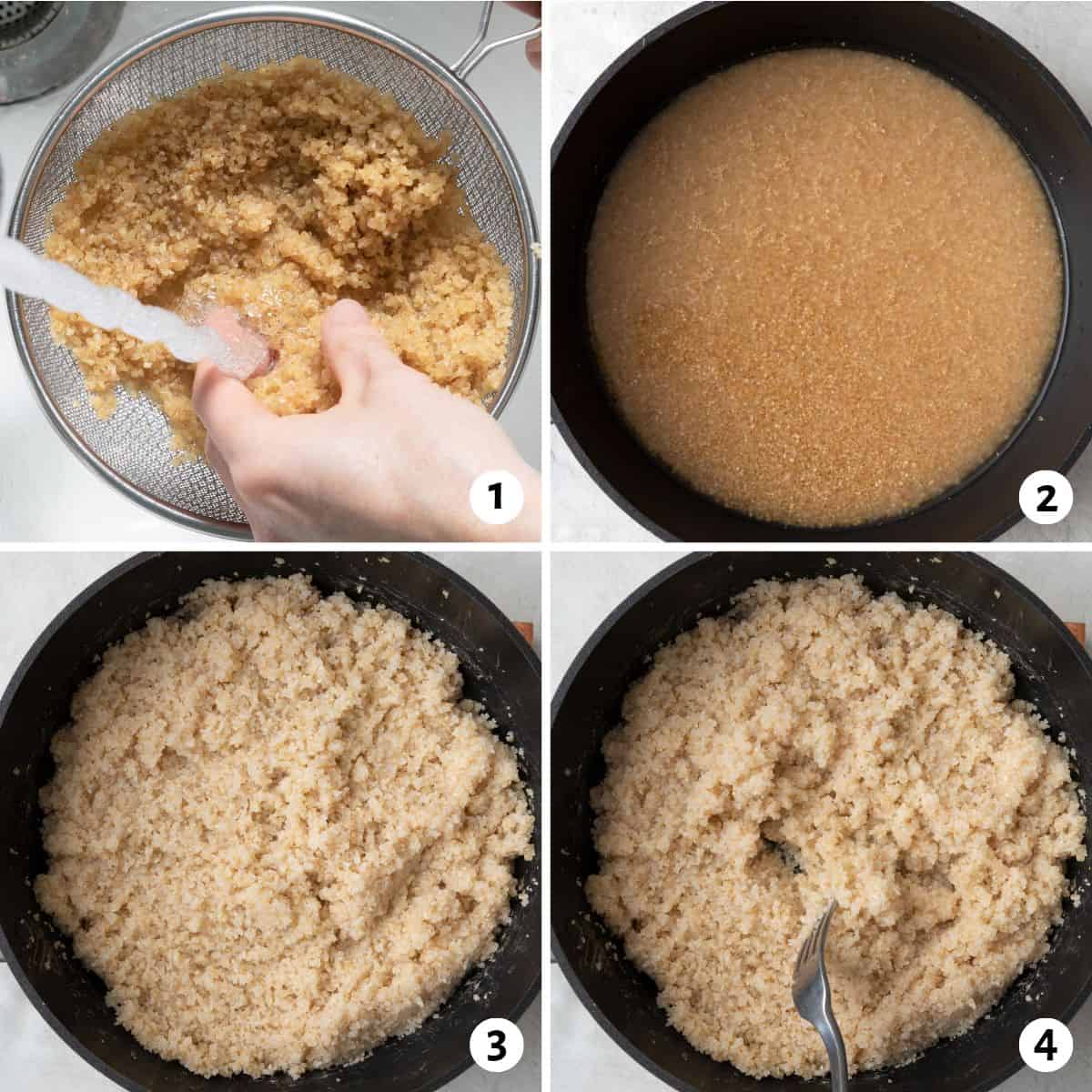
TIPS FOR The best Bulgur Wheat
- Rinse before cooking: Be sure to rinse your bulgur wheat thoroughly in cold water before cooking. This step removes any debris or excess starch, ensuring a clean and fluffy final result.
- Adjust the liquid ratio: Depending on the brand and age of your bulgur wheat, you may need to slightly adjust the liquid-to-grain ratio. If your bulgur turns out too dry or too wet, make a note and adjust the amount of liquid next time accordingly.
- Watch the heat: When cooking medium or coarse bulgur, be careful not to let the heat get too high. A gentle simmer is key to achieving tender, perfectly cooked grains without burning or sticking to the pot.
- Let it steam: After removing the cooked bulgur wheat from the heat, allow it to rest, covered, for a few minutes before fluffing with a fork. This steaming process ensures a light, fluffy texture and prevents the grains from clumping together.
- Fluff gently: When your bulgur wheat is ready, use a fork to gently fluff and separate the grains. Avoid using a spoon or spatula, as they can cause the grains to become mushy or sticky.
- Customize with herbs and spices: Add a burst of flavor to your bulgur wheat by stirring in fresh herbs, spices, or aromatics like garlic or onion. This step can elevate your dish and add a personal touch to suit your taste buds.
recipes to make with Bulgur Wheat
- Cilantro Chicken
- Bulgur Chickpea Salad
- Grilled Lamb Kabobs
- Okra Stew
- Lebanese Stuffed Eggplant
- Beef Kafta
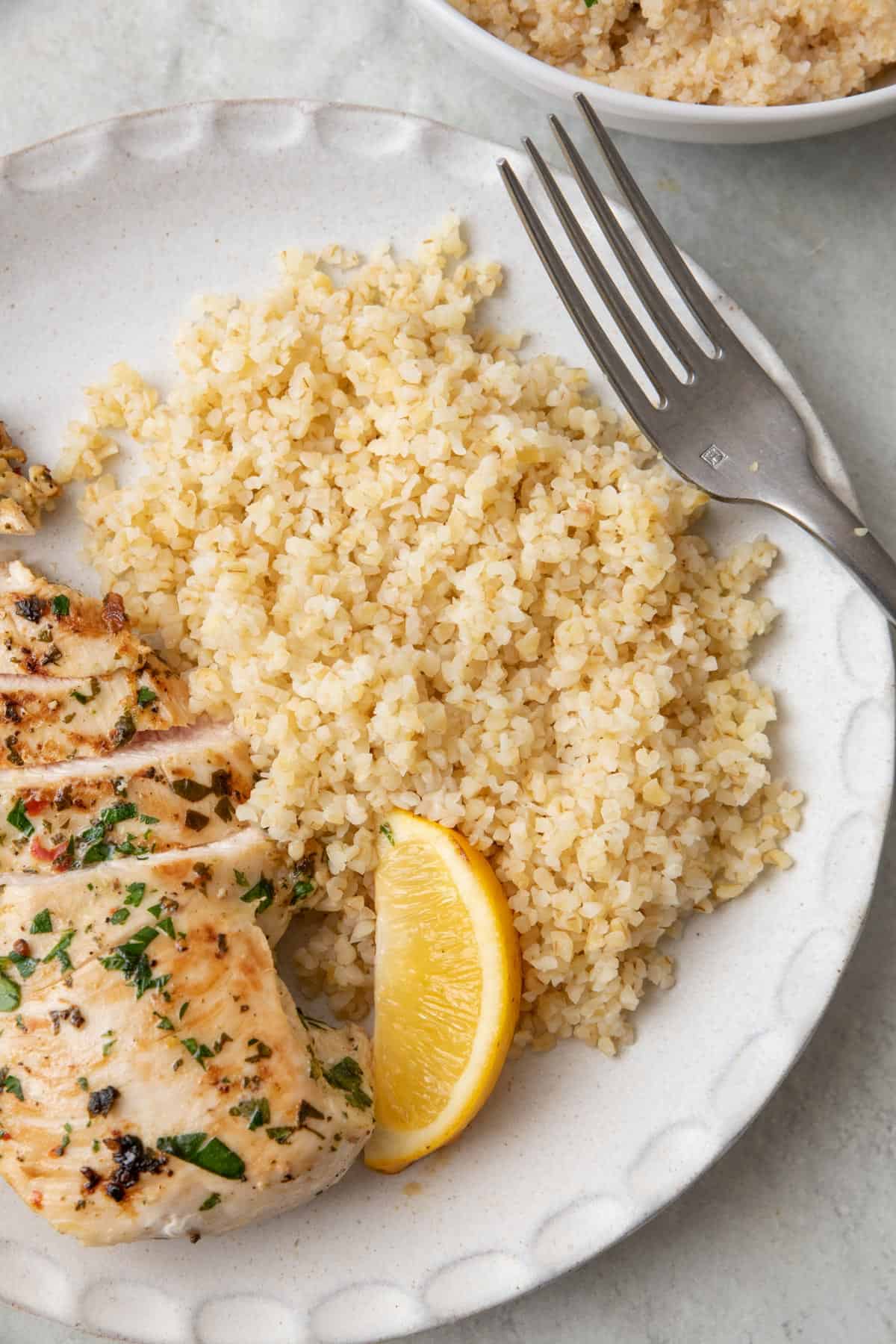
HOW TO REHEAT & STORE Bulgur Wheat
Store any leftover bulgur wheat in an airtight container in the refrigerator. Reheat gently in the microwave or on the stovetop with a splash of water or stock to prevent drying out.
HOW LONG WILL Bulgur Wheat LAST IN THE FRIDGE?
Bulgur will last up to 4 days in the fridge.
CAN I FREEZE cooked Bulgur Wheat?
Yes, you can freeze cooked bulgur wheat! Freezing is a great way to extend its shelf life and have a convenient, ready-to-use ingredient on hand for future meals.
To freeze cooked bulgur wheat, follow these steps:
- Allow the cooked bulgur wheat to cool completely to room temperature.
- Spread the bulgur wheat out on a baking sheet lined with parchment paper or a silicone mat in a thin, even layer. This step helps prevent the grains from clumping together when frozen.
- Place the baking sheet in the freezer for about 1-2 hours, or until the bulgur wheat is frozen.
- Transfer the frozen bulgur into airtight containers or heavy-duty freezer bags. Be sure to label the containers or bags with the date and contents.
- Store the bulgur wheat in the freezer for up to 3 months for the best quality.
When you’re ready to use your frozen bulgur, there’s no need to thaw it beforehand. Simply add it directly to your recipe, or reheat it gently in the microwave or on the stovetop with a splash of water or stock to restore its moisture and fluffiness.
FREQUENTLY ASKED QUESTIONS
The numbers on bulgur wheat packages correspond to the grain size. Generally, #1 indicates fine bulgur, #2 is medium, #3 is coarse, and #4 is extra coarse. Each size has a unique texture and is suitable for different dishes, as well as requiring specific cooking methods.
Yes, you can use a rice cooker or Instant Pot to cook bulgur wheat. In a rice cooker, follow the manufacturer’s instructions for cooking times and water-to-grain ratios. For Instant Pot, use a 1:1.5 ratio of bulgur to liquid for medium or coarse bulgur, and cook on high pressure for 10 minutes, followed by a 10-minute natural pressure release.
No, bulgur wheat is not gluten-free, as it’s made from wheat berries. Those with celiac disease or gluten intolerance should avoid consuming bulgur wheat and opt for gluten-free grains like quinoa or rice instead.
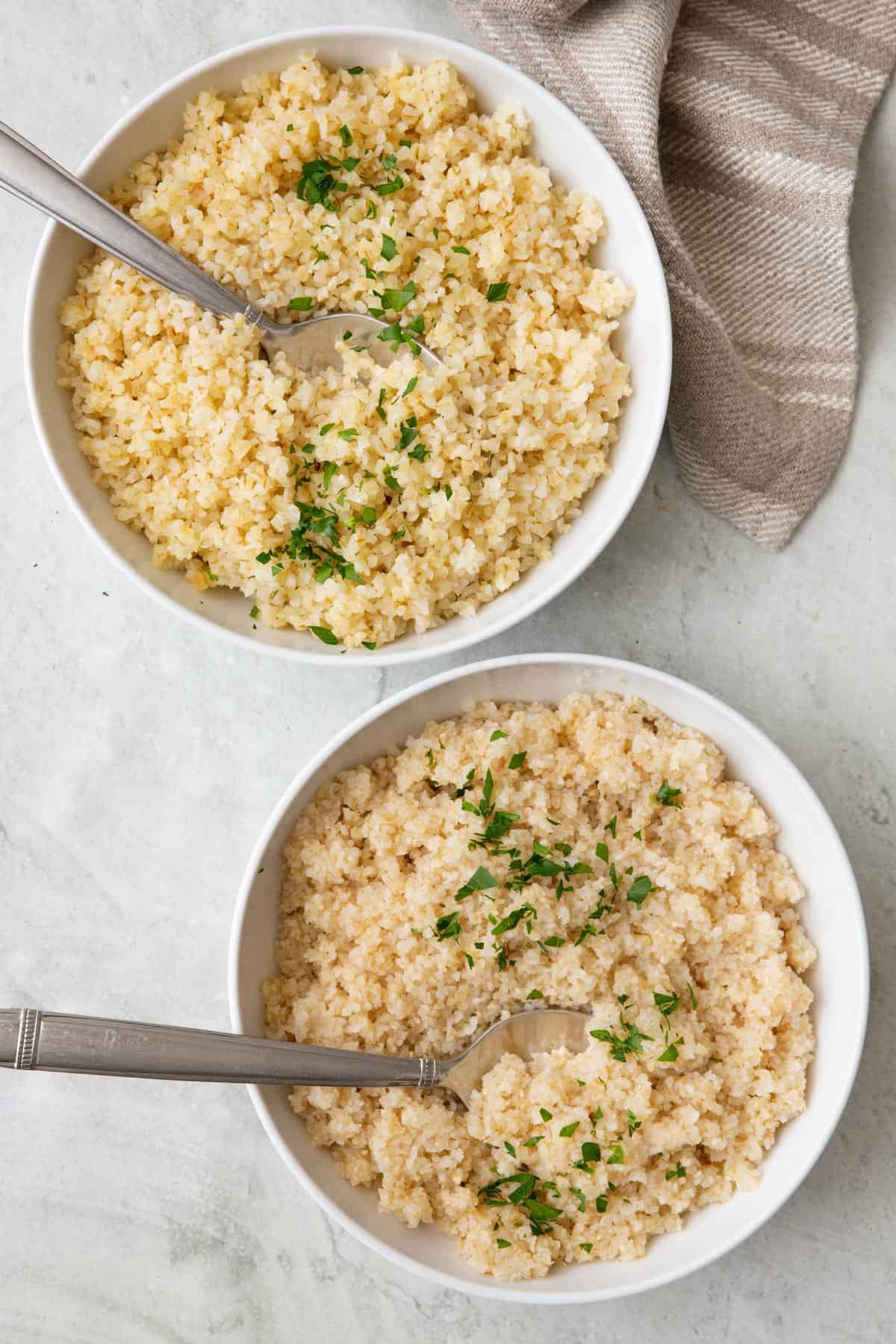
Mastering the art of cooking bulgur wheat is an excellent skill to have in your culinary repertoire. This versatile, nutritious grain can be easily prepared using the right techniques for each grain size. Don’t be afraid to experiment with different flavors and dishes, as bulgur wheat’s adaptability makes it a fantastic addition to many recipes. Whether you’re new to cooking with bulgur or a seasoned pro, the tips and tricks provided here will help you create delicious, satisfying meals that showcase this wonderful grain. Happy cooking!
MORE cooking tutorials:
- How to Cook Brown Rice
- How to Cook Quinoa Perfectly
- How to Cook Chickpeas
- How to Make Broccoli Rice
- How to Make Risotto
- How to Cook Rice
- How to Cook Basmati Rice
- How to Cook Farro
- How to Cook Lentils
- How to Make Cauliflower Rice
If you found this tutorial for How to Cook Bulgur helpful or if you try any recipe on Feel Good Foodie, then don’t forget to rate the recipe and leave a comment below! It helps others who are thinking of trying out this tutorial and we would love to hear about your experience. And if you snapped some shots, share it on Instagram so we can repost on Stories!

How to Cook Bulgur Wheat
Ingredients
For Fine Bulgur
- 1 cup fine #1 bulgur wheat
- 2 cups water
- ½ teaspoon salt
For Medium or Coarse Bulgur
- 1 cup medium or coarse bulgur wheat
- 1 ½ cups water
- ½ teaspoon salt
Instructions
For Fine Bulgur
- Rinse bulgur in a colander with cold water, making sure to agitate it with your hands to rinse it until the water runs clear. Drain immediately.
- In a medium saucepan, add the water and salt to a boil.
- Add the bulgur and stir. Remove from heat and let stand, covered, for 10 minutes. Fluff with a fork and serve.
For Medium or Coarse Bulgur
- Rinse bulgur in a colander with cold water, making sure to agitate it with your hands to rinse it until the water runs clear. Drain immediately.
- In a medium saucepan, add the water and salt to a boil.
- Add the bulgur and stir and bring the mixture to a boil again. Lower the heat to medium-low and cook the bulgur covered until tender and all the liquid is fully absorbed, 15 minutes. Remove from heat and let stand, still covered, for 5 minutes. Fluff with a fork and serve.
Equipment
Notes
Nutrition
Nutrition information provided is an estimate. It will vary based on cooking method and specific ingredients used.





